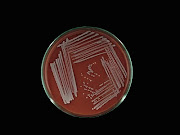Vulvovaginal
Candidiasis, an increasing burden to women in the tropical regions attending
Bharatpur Hospital, Chitwan
Anisha Subedi1#, Milan Kumar Upreti1#,
Jid Chani Rana2, Ram Prasad Sapkota2, Upendra Thapa Shrestha3 *
1 Department of Microbiology, Goldengate International College,
Battisputali, Kathmandu
2 Bharatpur Hospital, Chitwan
3 Central Department of Microbiology, Tribhuvan University, Kirtipur,
Kathmandu
# These authors equally contributed to the study
* Corresponding author: Upendra Thapa Shrestha, Assistant Professor, Central Department of Microbiology, Tribhuvan University, Kirtipur, Kathmandu, Nepal. Email: upendrats@gmail.com
ABSTRACT
Vulvovaginal candidiasis
is a yeast infection commonly caused by the overgrowth of Candida species in and around the vulva and vagina. Abnormal
vaginal discharge, itching and irritation, swelling and redness of the vaginal
area, pain during sexual intercourse, and dyspareunia are important clinical
findings of the infection. Currently, the infection is one of the growing burdens
to married women. Moreover, the infection with antifungal-resistant Candida
species adds challenges to managing the disease. Hence, this study was conducted
to identify the different Candida
species causing vulvovaginal candidiasis and to determine its susceptibility
pattern against different antifungal drugs. A hospital-based cross-sectional
and quantitative study was conducted for the period of six months from
September 2022 to March 2023 among symptomatic married women in the Gynecology
and Obstetrics Department of Bharatpur Hospital, Chitwan. A total of 300 symptomatic
cases were enrolled in the study. Candida species were isolated from
vaginal swabs following standard microbiological procedures and antifungal susceptibility
testing was performed with different antifungal agents. The total prevalence of
vulvovaginal candidiasis was found to be 37.3% (112/300). Among different
isolates, Candida albicans was found to be the most
predominant (52.6%), followed by Candida
glabrata (29.3%) among non-albicans. Women from the age group 25-35
years were found to be more infected (47.3%) and the relationship between
contraceptive use and vulvovaginal candidiasis was found to be statistically
significant (p<0.05). Candida
species showed higher susceptibility toward Amphotericin-B (68.1%), followed by
Fluconazole (51.7%), and Clotrimazole (50.9%). Whereas the least susceptibility
was observed to Voriconazole (27.6%) and Itraconazole (35.30%). Candida albicans was comparatively more susceptible to different antifungal
drugs than non-albicans species. Candida parapsilosis was only susceptible to Amphotericin-B and the
increasing incidence of vaginal candidiasis due to non-albicans Candida indicates the need for routine speciation of Candida.
Keywords: Vulvovaginal candidiasis, HiCrome agar, Candida albicans, Candida non-albicans Antifungal Susceptibility testing
FULLTEXT: Download























1 comments:
Chennai, a major hub for education and industry in India, is home to some of the finest airport management colleges.
airport management colleges in chennai
airport management courses in chennai
Post a Comment